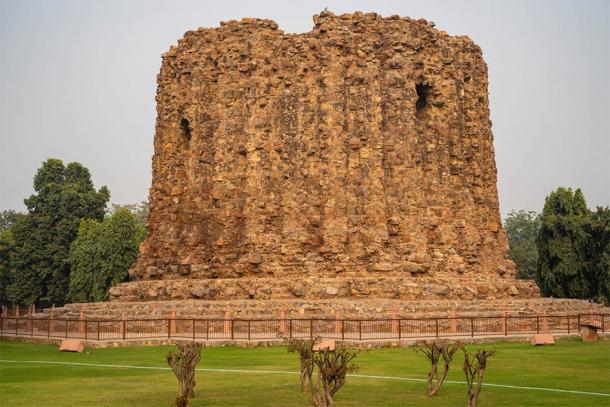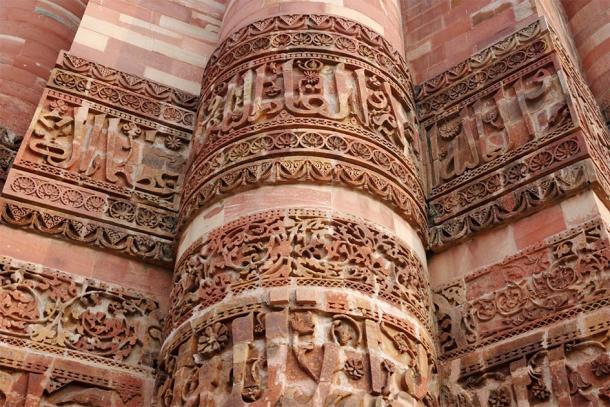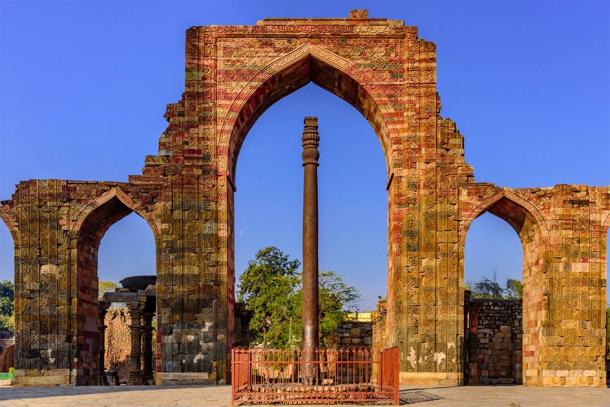Islamic culture has left an indelible mark on India’s celebrated architectural heritage. One of the most remarkable examples is the Qutb Minar , also known as the Victory Tower and the tallest minaret in the world built of bricks. The monument was one of the first of the many remarkable structures created by the Delhi Sultanate and forms part of the Qutb complex, designated a UNESCO World Heritage Site.
The History of Qutb Minar, New Delhi
Ruled by several mainly Hindu dynasties at the time, from the 9 th to the early 11 th century, first Arab and then Muslim Turks raided deep into India. Mohammad of Gorh, sultan of the Ghurid Empire , absorbed Indian territories into his empire in the 12 th century. His general, Qutubuddin Aibak, also defeated several Hindu kingdoms. When the sultan died, Aibak made himself independent and established what was to become the Delhi Sultanate.
Qutubuddin Aibak built a number of massive monuments to commemorate his many victories and to legitimize his new Mamluk Dynasty . He started the construction of the minaret, Qutb Minar in the 1190s, not long after the commencement of the nearby Quwwat-ul-Islam Mosque.

The unfinished Alai Minar monument within the Qutb Minar complex in New Delhi which was intended to be taller than the Qutb Minar ( MelissaMN / Adobe Stock)
The Qutb Minar was one of the earliest minarets built in India and stands apart from the nearby mosque. Aibak completed the first story but the next three were built by a successor, Shams ud-Din Iltutmish.
The minaret became known as the Victory Tower of Qutb Minar because it was not only a religious structure but also a monument to the growing power of the Delhi Sultanate . The minaret was restored by Firoz Shah Tughlaq, who added another story in the 14 th century. The Lodi Dynasty in the 16 th century rebuilt large sections after an earthquake and a series of lightning strikes. Sher Shah Suri, who briefly ousted the Mughals from Delhi, constructed an entrance to the tower.
The tower was also used as an observation platform to monitor raiders and besieging armies. In the 19 th century, a cupola was added by a British official, but this was later taken down and is now on display at ground level.
In 1981, the electricity failed in the tower which led to a stampede down the tower’s 379 steps and resulted in the death of 45 people, mainly school children. Today Qutb Minar is India’s most popular monument and is visited by millions.
The Beauty of Qutb Minar Victory Tower
Located in Delhi, Qutb Minar is part of the Qutb complex which consists of many spectacular buildings and structures dating to the Delhi Sultanate. The Victory Tower was built largely of sandstone and is set in an extensive garden.
The Victory Tower measures 237 feet (72 m) high with a base diameter of 47 feet (14 m) and consists of angular and circular flutings, ornamental grooves, with an inscriptions dedicated to Mohammad of Ghor.

Beautiful detail of Qutb Minar, highest stone minaret ( kaetana / Adobe Stock)
The remaining tower is round and simple with geometric designs and quotes from the Quran, masterpieces done in Islamic calligraphy . The third story also has angular grooves, while the fourth is built of marble and has only a few inscriptions. The fifth level is constructed in a blend of marble and sandstone and also has relatively few designs. The tower has four loggias (balconies) with elaborately carved brackets.
The minaret is still in use and the faithful are called from here to the nearby Quwwat-ul-Islam mosque for prayer.
The Journey to Qutab Minar in New Delhi, India
The minaret is located in the historic heart of New Delhi, not far from a major metro station. A fee is charged to visit the location and it is open to the public from sunrise to sunset. It is no longer possible to enter the tower without permission after the 1981 tragedy.

Iron pillar, famous for rust-resistant composition of the metals used in its construction at Qutb complex at Delhi, India ( anjali04 / Adobe Stock)
Not to be missed in the complex is the iron pillar thought to be constructed by Chundragupta II in the 4 th century. This ancient pillar is famous for its rust resistant properties.
As Qutb Minar holds great historic and religious significance for many local people, visitors are asked to behave appropriately.
Top image: Qutub Minar, the tallest brick minaret in the world, New Delhi, India. Source: kingslyg / Adobe Stock
By Ed Whelan
Related posts:
Views: 0
 RSS Feed
RSS Feed

















 August 25th, 2020
August 25th, 2020  Awake Goy
Awake Goy 




 Posted in
Posted in  Tags:
Tags: 
















